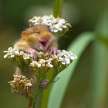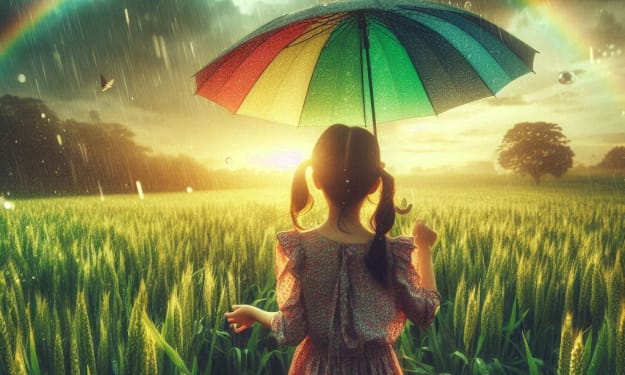"From Shrieking Horrors to Dapper Delights: The Mesmerizing Evolution of Vampires"
"Unearthing the Hidden Secrets of Vampires: From Ancient Terrors to Modern Enchantments"

"Good evening! What's the fuss? Do vampires send shivers down your spine? Well, fear not, for I'm not here for a meal. Instead, I'm here to take you on a fascinating journey through the evolution of the vampire myth, a transformation from a decaying corpse to the suave figure you see before you.
Vampires have a history nearly as ancient as humanity itself, with tales of these revenants appearing in cultures dating back to prehistoric times. However, in those days, we weren't referred to as vampires, and we certainly didn't fit the stereotypical image we have today.
Indeed, our early incarnations were far from the pale, elegant beings we envision now. For instance, the Mesopotamian Lamashtu had the head of a lion and the body of a donkey, while the ancient Greek striges were described as bloodthirsty birds. Some were even more peculiar, like the Philippine manananggal, who would detach her upper torso to sprout bat-like wings and take flight. The Malaysian penanggalan was a flying female head with dangling entrails. And then there's the Australian Yara-ma-yha-who, a small, red creature with a large head, a gaping mouth, and bloodsuckers on its hands and feet. Let's not forget the Caribbean's soucouyant, the West African obayifo, and the Mexican Tlahuelpuchi. (Laughter) Quite a colorful bunch, aren't they?
But despite their differences in appearance, all these creatures shared one common trait: they sustained themselves by consuming the life force of the living. This shared characteristic is what defines a vampire, while the rest of their attributes have shifted over time.
So, how did we evolve into the reanimated figure you see today? Our modern concept of vampires emerged in 18th-century Eastern Europe, coinciding with a surge in vampire superstitions. Stories of nocturnal, bloodsucking creatures became nightly terrors for many. Folklore from that era, like the Romani moroi and Albanian lugat, provided the foundation for the most common vampire traits we know today, such as being undead, nocturnal, and shape-shifting.
Eastern Europe during the 18th century was a rather grim place, with countless unexplained deaths from diseases and plagues. In the absence of medical explanations, people turned to supernatural causes and found what they believed to be evidence in the corpses of the deceased. When villagers exhumed bodies to uncover the cause of these mysterious deaths, they often found cadavers that appeared remarkably lifelike, with longer hair and nails, bloated bellies, and blood at the corners of their mouths. Clearly, these were not truly dead; they were vampires! And they were rising from their graves to feast on the living. (Grunt) Terrified villagers would hastily enact rituals to eliminate the undead, with practices varying across the region but usually involving beheadings, burnings, and staking the body to the coffin to prevent it from rising. (Laughter) Quite gruesome!
What the villagers interpreted as unholy reanimation, however, were just normal postmortem changes. As a body decomposes, the skin dehydrates, causing hair and nails to grow. Bacteria in the stomach generate gases, which inflate the belly and force out blood and matter through the mouth. Unfortunately, this scientific knowledge was yet unknown at the time, so the villagers continued to dig up bodies. In fact, the situation became so dire that the Empress of Austria dispatched her physician to debunk the vampire stories, even instituting a law against grave desecration.
Despite the decline in vampire hunts, the legends persisted in local superstitions, eventually inspiring literary works like Polidori's "The Vampyre," the Gothic novel "Carmilla," and, most famously, Bram Stoker's "Dracula." While Stoker incorporated historical elements, such as Elizabeth Báthory's blood baths and the brutal executions of Vlad Dracul, it was the local myths that provided the foundation for his story's key elements: the Transylvanian setting, using garlic as a defense, and staking through the heart. Although these attributes are quite familiar to us, Stoker also introduced new characteristics, like vampires' fear of crucifixes, vulnerability to sunlight, and the inability to cast reflections. By introducing these traits, Stoker effectively continued the age-old tradition of expanding the vampire myth.
As we've seen, prior to the emergence of Dracula, a multitude of diverse creatures haunted the night. Many more have since crept into our nightmares. Yet, as long as they feed on the life force of the living, they remain part of the vampire legacy. Even the sparkling vampires can be included. After all, it is the ongoing storytelling and reinterpretation of the vampire myth that allows it to truly endure forever."
About the Creator
Enjoyed the story? Support the Creator.
Subscribe for free to receive all their stories in your feed. You could also pledge your support or give them a one-off tip, letting them know you appreciate their work.






Comments
There are no comments for this story
Be the first to respond and start the conversation.